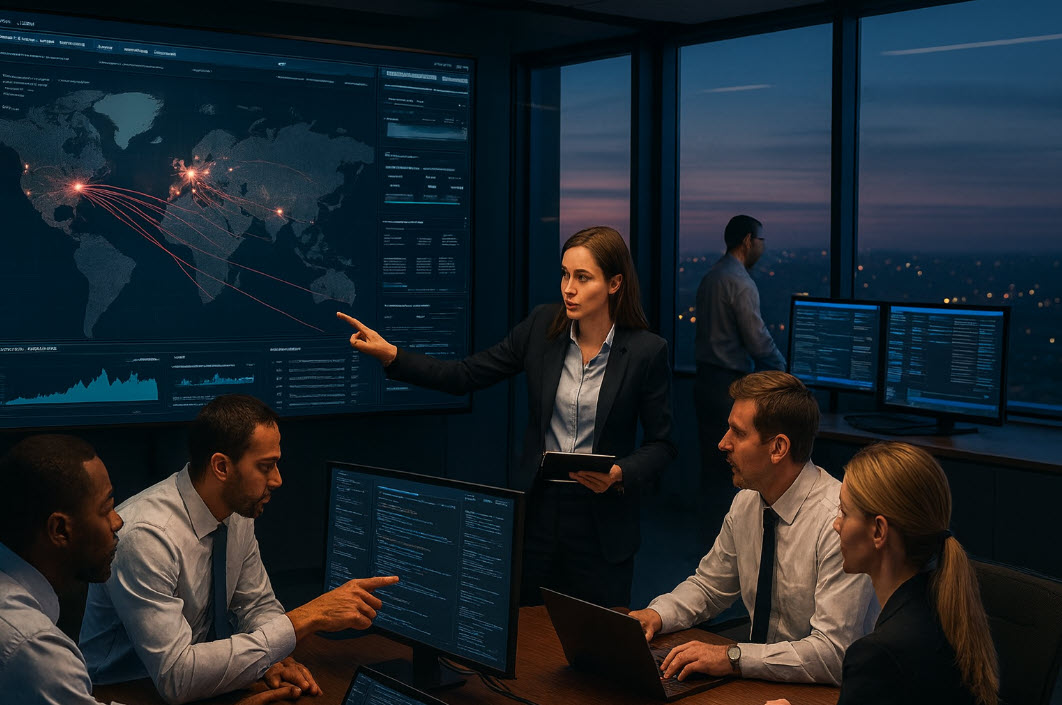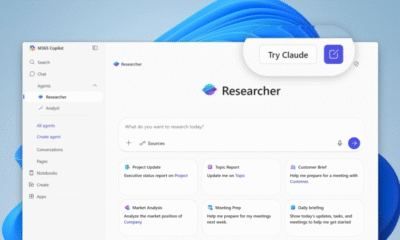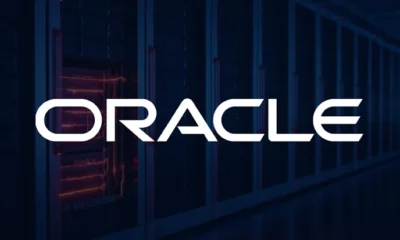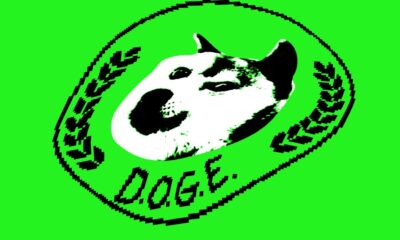Tech News
The Death of Manual Response Times: SOC Teams Confront 51-Second Breach Reality

Defending Against Adversarial AI Attacks with Agentic AI Cyberdefense
In today’s fast-paced cybersecurity landscape, the speed at which adversaries can breach systems and move laterally far surpasses the capabilities of Security Operations Center (SOC) analysts to respond effectively. Recognizing this challenge, security leaders are embracing a new era of agentic AI cyberdefense to combat evolving threats.
According to industry experts, organizations are shifting towards automated responses powered by agentic AI technologies to match the rapid pace of cyberattacks. This transition is driven by the need for enhanced efficiency and scalability in detecting and mitigating security threats.
In a recent report, Gartner highlighted the growing demand for AI-powered solutions to bolster existing security operations and address the expanding threat landscape. By integrating AI capabilities into their security infrastructure, organizations aim to maximize the return on investment from their current tools while fortifying their defenses against sophisticated attacks.
Analysts predict a significant growth opportunity in the agentic AI market, with projections indicating a potential increase in the Total Addressable Market (TAM) from $140 billion in the current year to $300 billion by 2030. This exponential growth underscores the critical role that agentic AI technologies will play in securing assets and safeguarding organizations against cyber threats.
The Importance of Strong Governance for Scaling Agentic AI
While agentic AI holds immense promise for bolstering cybersecurity defenses, ensuring robust governance frameworks is essential for its successful implementation. CrowdStrike CEO, George Kurtz, emphasized the importance of establishing stringent controls to govern AI agents effectively, likening them to interns with full access to networks that require proper oversight.
Security leaders and Chief Information Security Officers (CISOs) are increasingly focused on developing mature governance practices to address concerns related to AI deployment. To tackle governance challenges effectively, enterprises are experimenting with innovative architectural approaches that prioritize security and compliance.
Shlomo Kramer, CEO of Cato Networks, highlighted the significance of a well-designed architecture in leveraging AI capabilities to address IT challenges comprehensively. He emphasized the importance of data quality in driving AI engines and underscored the role of an agile architecture in enhancing connectivity and user experience.
Effective governance serves as a unifying force that integrates data lakes, Secure Access Service Edge (SASE) infrastructure, and agentic AI platforms into a cohesive cybersecurity strategy. As organizations grapple with the prospect of securing a 100x increase in assets, implementing robust governance frameworks will be critical to ensuring the efficacy of agentic AI technologies.
Top Ten Agentic AI Technologies for Securing SOCs at Scale
1. Charlotte AI AgentWorks
Significance: CrowdStrike’s AgentWorks platform transforms Charlotte into an autonomous SOC orchestrator, leveraging specialized agents trained on years of threat telemetry data. These agents facilitate automated responses and mirror analyst decision-making patterns, enabling autonomous operations within the FalCon platform.
Enterprise Impact: AgentWorks competes with other agentic SOC solutions like Microsoft Copilot for Security, Palo Alto XSIAM, SentinelOne Purple AI, Google SecLM, and IBM QRadar Assistant. CrowdStrike’s unique selling point lies in its domain-specific training data accumulated over 14 years.
2. Threat AI Agents: Autonomous Defense at Machine Speed
Significance: Threat AI deploys autonomous agents capable of detecting, analyzing, and responding to threats without human intervention. This technology addresses the need for real-time threat mitigation in the face of increasingly sophisticated adversaries.
Enterprise Impact: Competing solutions such as Microsoft Sentinel, Splunk SOAR, Palo Alto Cortex XSIAM, SentinelOne Purple AI, and Google SecLM offer similar capabilities. CrowdStrike’s consolidation of telemetry data and extensive threat intelligence sets it apart in the agentic AI landscape.
3. Pangea Agent Protection: Enhancing AI Governance
Significance: CrowdStrike’s acquisition of Pangea enables the integration of runtime protection for AI agents directly into the Falcon platform. This technology shields enterprises from malicious activities and unsafe agent behavior, providing unified visibility and enforceable guardrails for scaling AI securely.
Enterprise Impact: Competitors like Robust Intelligence (Cisco), Protect AI (Palo Alto Networks), and Microsoft Copilot governance offer similar AI governance solutions. CrowdStrike’s seamless integration of Pangea enhances enterprise-wide protection against evolving threats.
4. Falcon for IT: Intelligence-Driven Vulnerability Management
Significance: Falcon for IT prioritizes patching based on real-world exploitation data, a departure from traditional CVSS scoring. This approach helps security teams focus on addressing vulnerabilities that pose the highest risk of exploitation, optimizing resource allocation.
Enterprise Impact: CrowdStrike’s emphasis on adversary intelligence coupled with vulnerability management differentiates its offering from competitors. Qualys, Tanium, Cato Networks, and Ivanti provide complementary solutions that enhance vulnerability prioritization and remediation workflows.
5. Onum Streaming Telemetry: Real-Time Threat Intelligence Pipeline
Significance: Onum processes security telemetry in real-time, eliminating delays associated with batch processing. This technology enables security teams to detect and respond to threats swiftly, aligning with the need for proactive threat mitigation.
Enterprise Impact: Onum’s real-time telemetry processing addresses the rising volume of security data and cost pressures faced by organizations. Competitors like Cribl, Splunk, Confluent, Elastic, and Ivanti offer similar solutions tailored to different aspects of security telemetry processing.
6. Unified Enterprise Graph: Contextual Intelligence at Scale
Significance: The Enterprise Graph creates a real-time digital twin that connects various assets, identities, and resources within an organization’s IT environment. This technology provides contextual intelligence that enhances visibility and correlation across security domains.
Enterprise Impact: Vendors like Microsoft, Neo4j, and ServiceNow offer graph-based solutions to unify security context. CrowdStrike’s Enterprise Graph focuses on multi-cloud correlation and trend analysis, positioning it as a comprehensive platform for contextual intelligence.
7. Malware Analysis Agent: Automated Threat Analysis
Significance: The Malware Analysis Agent automates the process of reverse engineering malware, significantly reducing analysis time. This technology plays a crucial role in threat detection and response, enabling security teams to identify and mitigate malicious activities efficiently.
Enterprise Impact: Automated malware analysis is a key component of SOC efficiency, with solutions like Palo Alto WildFire, VMRay, and Joe Sandbox offering similar capabilities. CrowdStrike’s emphasis on speed and scalability sets its Malware Analysis Agent apart in the threat intelligence space.
8. Agentic Fusion SOAR: Automated Security Orchestration
Significance: Fusion SOAR translates natural language into automated workflows, simplifying security orchestration without the need for coding. This technology streamlines incident response processes and enhances operational efficiency in managing security incidents.
Enterprise Impact: FortiSOAR, Phantom, and Cato Networks offer alternative SOAR solutions with varying degrees of integration and technical expertise. CrowdStrike’s Fusion SOAR focuses on simplifying automation for endpoint-focused workflows, catering to the evolving needs of security teams.
9. Hunt Agent: Proactive Threat Discovery
Significance: The Hunt Agent automates threat hunting by generating and testing hypotheses autonomously. This technology revolutionizes threat hunting from a manual process to a data-driven approach, enabling security teams to proactively identify and mitigate potential threats.
Enterprise Impact: Automated hypothesis generation marks a significant shift in threat hunting methodologies, with solutions like Mandiant, Vectra AI, and Elastic offering specialized capabilities. CrowdStrike’s Hunt Agent emphasizes scalability and cross-domain threat analysis, positioning it as a comprehensive threat hunting tool.
10. Governance by Design: Ensuring Transparent AI Operations
Significance: Governance frameworks ensure that AI agents operate within defined boundaries and comply with regulatory requirements. This technology is essential for operationalizing AI in regulated industries, providing transparency and auditability in AI-driven decision-making processes.
Enterprise Impact: Microsoft, Google, and OpenAI offer governance solutions tailored to regulated industries, emphasizing configurability and compliance. CrowdStrike’s Governance by Design approach focuses on enforcing operational boundaries and auditability, addressing the unique needs of financial and highly regulated enterprises.
The Future of Agentic AI in Cybersecurity
As organizations navigate the evolving threat landscape and the exponential growth in assets to secure, collaboration and partnership within the cybersecurity industry will be crucial. Defending against adversarial AI attacks requires a unified approach, with a focus on architectural integrity, embedded governance, and collective innovation.
Adversaries collaborate to exploit vulnerabilities, highlighting the importance of a cohesive cybersecurity strategy that leverages agentic AI technologies effectively. By embracing a collaborative mindset and prioritizing architecture and partnerships, organizations can enhance their cybersecurity posture and stay ahead of emerging threats in the dynamic cybersecurity landscape.
-

 Video Games2 days ago
Video Games2 days agoGoku Takes on the Dragon Ball FighterZ Arena
-

 Video Games3 days ago
Video Games3 days agoTekken 8: Rise of the Shadows
-

 Amazon3 days ago
Amazon3 days agoNeil Young Takes a Stand: Pulling Music from Amazon in Protest of Jeff Bezos’ Support for Trump
-

 Cars1 day ago
Cars1 day agoRevving into the Future: Ferrari’s Plan to Unleash 20 New Models, Including Electric Vehicles, by 2030
-

 Tech News3 days ago
Tech News3 days agoSamsung Galaxy UI 8: Embracing the Big Free AI Upgrade
-

 Microsoft1 day ago
Microsoft1 day agoMicrosoft Integrates Anthropic’s Claude AI Models into 365 Copilot: A Deepening Relationship with OpenAI
-

 Security3 days ago
Security3 days agoCritical Vulnerability Exposed: Oracle EBS Targeted in Recent Cyber Attacks by Cl0p Hackers
-

 Microsoft3 days ago
Microsoft3 days agoEnhanced Copilot Features: Creating Office Documents and Gmail Integration































